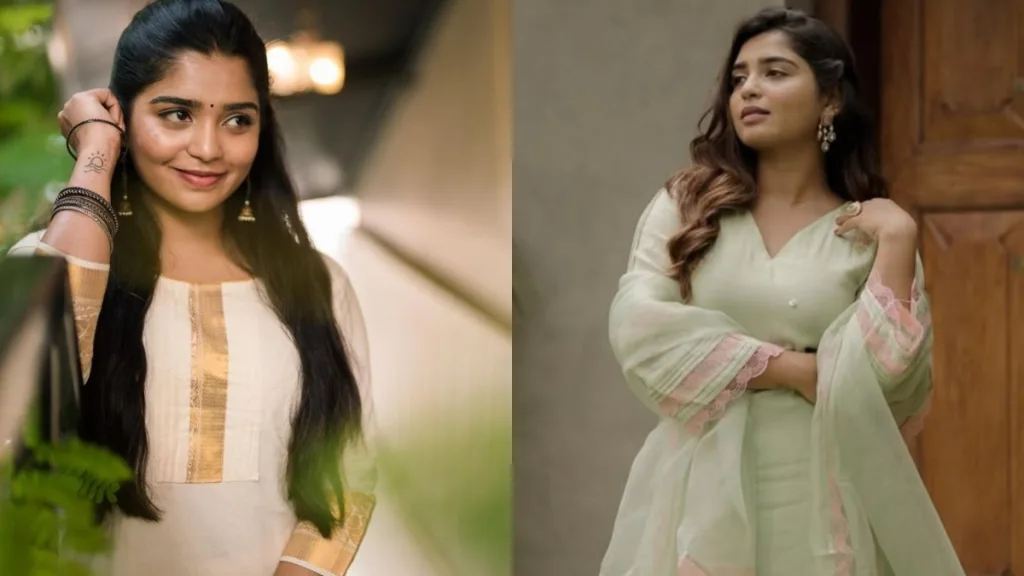When actress Gouri Kishan was asked at a press conference for her film Others how much she weighed, the question was so jarring that she immediately challenged the journalist: “How does my weight concern you in any way?” Her demand for relevance, dignity and parity — “Would you ask a male actor the same, in the same tone?” — struck a chord across social-media feeds and film-industry corridors.
But beneath this singular moment is a much larger story: the entertainment world’s long-standing reliance on appearance, especially for female actors, and how that reality has seeped into public perceptions and media practices. Gouri’s experience did more than make headlines; it reminded us how deeply appearance stereotyping continues to influence Indian film and television.
At the promotional event, a YouTuber turned press-room questioner pointedly asked about Gouri’s weight — an incident later condemned by industry bodies such as the South Indian Artists’ Association and the Association of Malayalam Movie Artists. Gouri issued a public statement urging the media to treat artists with respect, emphasising: “Comments or questions – direct or indirect – that target a person’s body or appearance are inappropriate in any context. I wish I had been asked questions about the film – the work I was there for.”
Her courage in rejecting the question underscored the routine nature of appearance-based comments in press rooms — and how conditioned many actors have become to slipping past them silently.
Beauty, Body and Bollywood’s Historical Scripts
Appearance stereotyping in Indian entertainment is hardly new. Scholars note that from the 1940s onwards, mainstream Hindi cinema preferred fair-skinned women, slim bodies, and “idealised” feminine beauty aligned with upper-class aesthetics. A working paper revealed that Bollywood not only mirrored but also reinforced social biases regarding skin colour and gender roles.
For decades, the ‘hero-lead’ female actor was expected to be tall, light-skinned, slender and styled in a way that underscored glamour. Even as narratives changed, those appearance markers remained. A 2019 paper on beauty standards in Indian media concluded: “Mainstream Hindi movies & television channels reinforce the ideal woman as one with fair skin, light eyes, longer hair and a slim body.”
And the result? A dual effect: inside the industry, talent began to count second to “look”; in the audience, appearance turned into a metric of worth. When actresses deviate from the ideal — whether by weight gain, darker skin, unconventional height or even visible signs of ageing — they can face harsher scrutiny, fewer roles and body-linked commentary disguised as curiosity.
Gouri Kishan’s Case: A Reflection of Who Pays the Price
When Gouri Kishan asked whether a male actor would face the same invasive question about his weight, she exposed the gendered nature of appearance policing. Men in Indian cinema certainly face looks-based commentary, but rarely with the same volume, intensity or professional cost that women suffer.
The virality of her response reflects a shift: the public is no longer willing to quietly absorb these scripts. Social-media users and fellow actors rallied to praise Gouri Kishan’s stand, reminding us that the industry — and the media ecosystem around it — still requires accountability for questions that treat bodies as tabloid fodder.
The ripple effect of these entertainment-industry norms goes further than movie-stars. When the screen valorises one body type, one skin tone, one notion of glamour, it influences self-image among viewers. Teens who idolise actresses might begin to equate success with slimness or fairness. Audiences might presume that talent is secondary to “look” in casting decisions.
The barrage of questions directed at actors at press-meets often codifies: you must be beautiful, you must stay slim — your craft alone won’t shield you from appearance judgments. Gouri Kishan’s intervention invites us to ask tougher public questions: Why are appearance-based questions still taken for granted in supposedly professional media settings? How often does an actor’s body overshadow her work?
The entertainment industry is slowly shifting. Actors such as Chitrangda Singh have spoken out about fuller figures and dusky skin being embraced. But Gouri’s moment calls us to the next step: practice, not just advocacy. Media outlets must scrutinise the questions they allow; production houses must resist look-based casting norms; press-meets should be professional spaces focussed on work, not optics.
Actors, meanwhile, continue to face a choice: accommodate appearance demands or challenge them. Gouri chose the latter — not as an act of defiance alone but as a push for systemic change: that bodies are not there for public commentary, and that talent, dedication and craft deserve the prime spotlight.
Yes, the question was about a celebrity’s weight — and yes, it hit digital headlines. But the bigger story is the legacy behind that question: decades of stereotyping that say women must look a certain way to be valuable. Gouri Kishan’s sharp reply echoes a growing resistance.
Her words may seem aimed at one journalist in one room, but they echo across the broader media—on-set, in casting offices, on social media feeds. The question isn’t merely about Gouri’s weight—it’s whether the industry and the media will stop treating a body as headline and start treating a person as professional.

